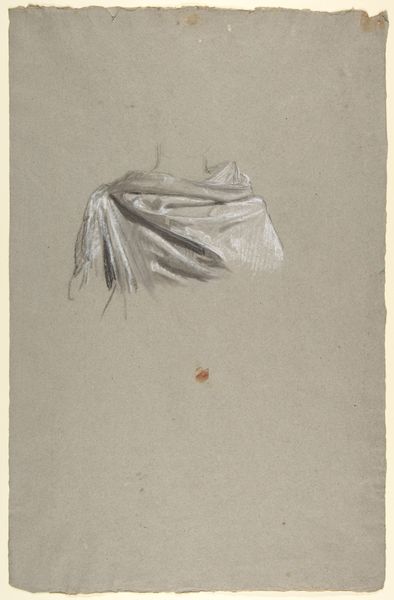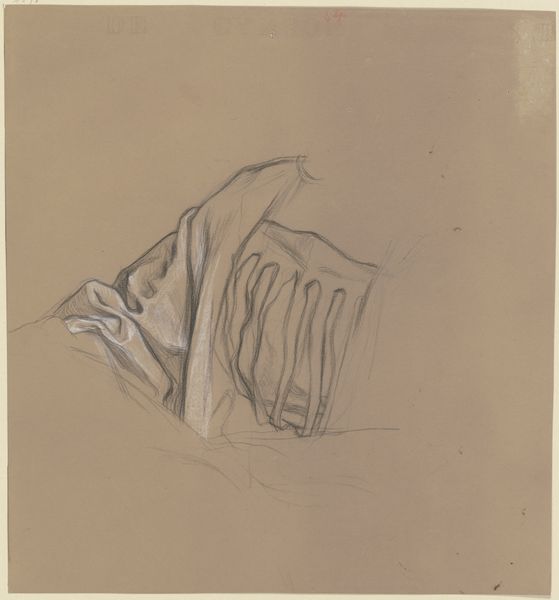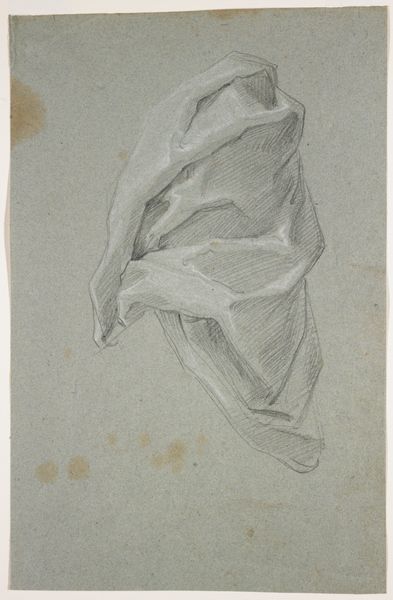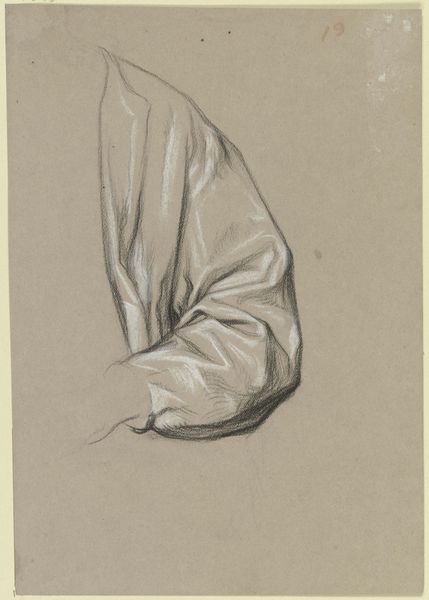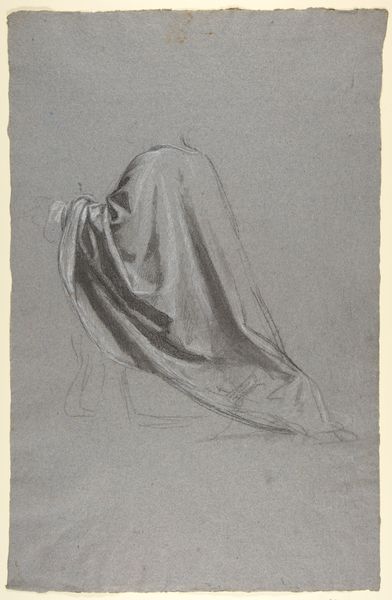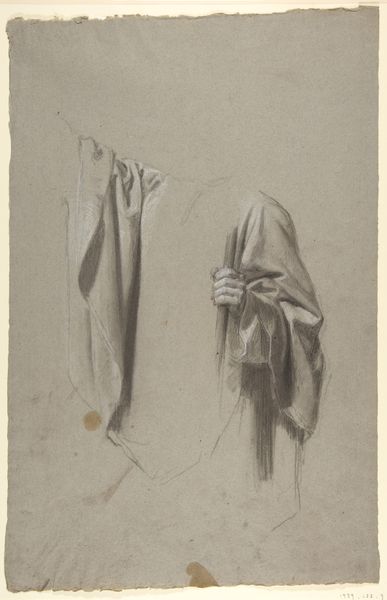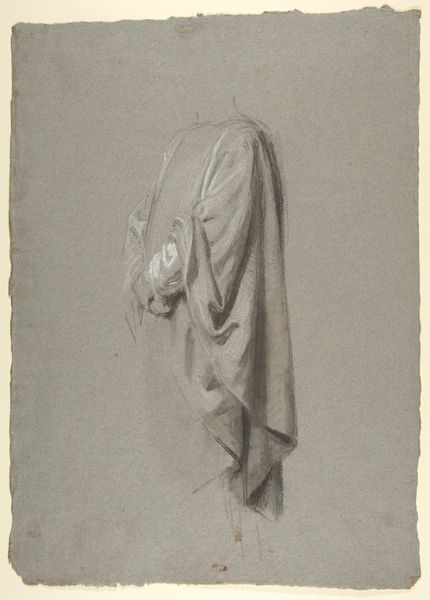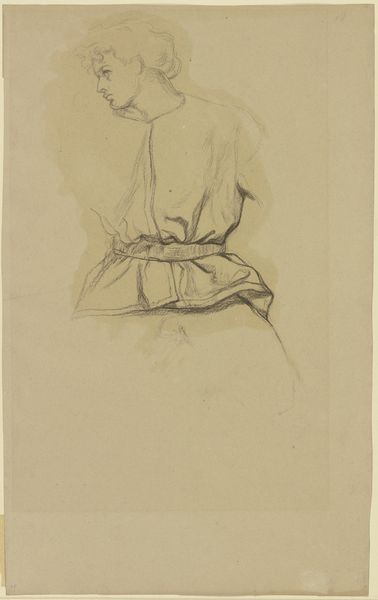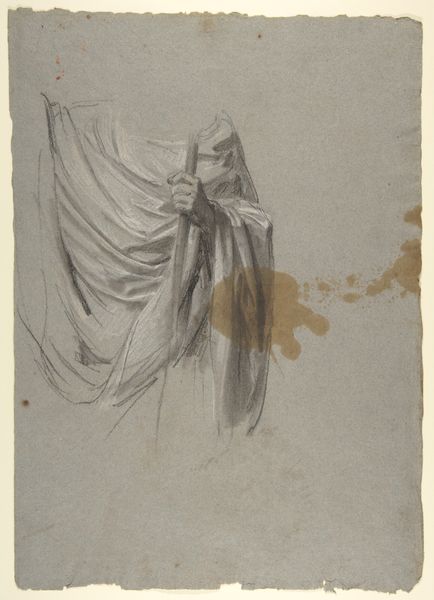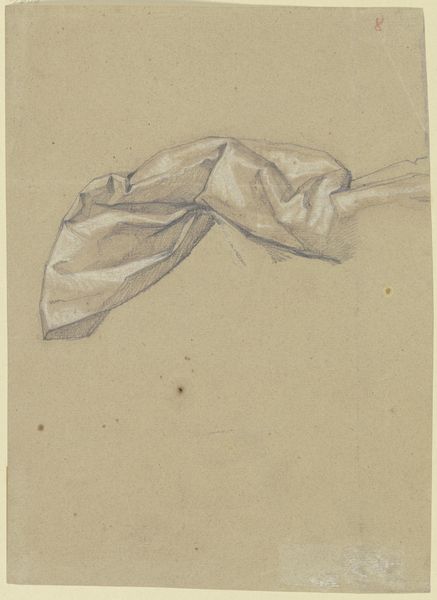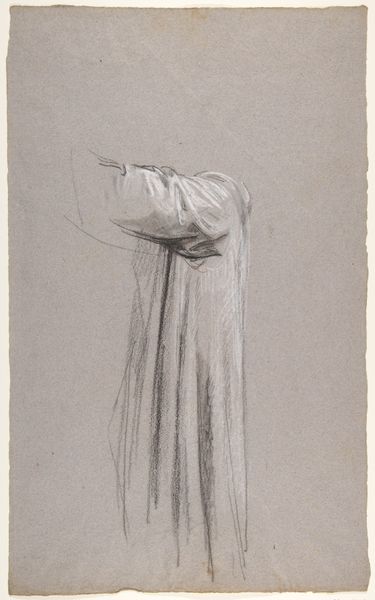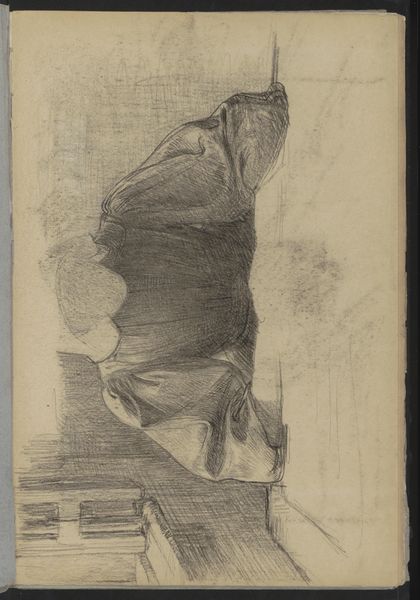
Drapery Study for Figure Holding Crown (middle register); study for wall paintings in the Chapel of Saint Remi, Sainte-Clotilde, Paris, 1858 1820 - 1875
0:00
0:00
drawing, paper, pencil
#
pencil drawn
#
drawing
#
paper
#
pencil drawing
#
romanticism
#
pencil
#
academic-art
Dimensions: 18 5/8 x 12 1/16 in. (47.5 x 30.5 cm)
Copyright: Public Domain
Curator: Hmm, this drawing has a very hushed, almost reverent feel to it. The paper itself seems to be holding its breath. Editor: Indeed. What we are observing is Isidore Pils' "Drapery Study for Figure Holding Crown," which dates from sometime between 1820 and 1875. It's a pencil drawing on paper, a preparatory sketch for his wall paintings in the Chapel of Saint Remi, Sainte-Clotilde, Paris. Curator: Drapery! Yes, of course, academically considered, but to me it appears as a spectral presence, an almost palpable suggestion of form rather than just the lines. Editor: Pils was known for his academic art, his paintings often commissioned by the French government to instill particular values or historical narratives. Here, the drapery isn't merely decorative, but integral to conveying nobility. Drapery established visual order and amplified religious and governmental powers, which had significance to the citizens and worshippers. Curator: Oh, I see it, yes – nobility! You put the ‘academia’ into the drapery! Yet there’s still that floating, ethereal quality, a spirit that goes beyond just rank or duty. Almost a longing, in a way, created by the dark hues of shadow under the flowing cloth. Editor: The shadows and the delicate rendering of folds and light…Pils is skillful in his employment of chiaroscuro. It guides the viewer, evoking the weight and the form, prefiguring the more grand scale paintings and the narrative taking place there. Curator: Do you think Pils was aware that his study would become something profound in its own right? Separated from the figures in Sainte-Clotilde, that the emotional current it evokes remains… perhaps more strongly than it would amidst its full context? Editor: The politics and context of such studies were embedded into art world institutions like the Met itself and academic structures in the 19th century. Pils understood these preparatory works to become models for academic prowess, allowing artists and those training to copy from them, creating an almost instructional guide to emulate "good art" with classical precedent. The museum acquires works of art with this intent in mind as well, though, what art "does" now changes the way we examine works then, regardless of initial intention. Curator: Intriguing. So, originally a reference point, an example to build on—yet, look at us now, lost in contemplation of it. A beautiful tension, right? Editor: Absolutely. It shows how meaning is never static; it always changes over time in response to current trends.
Comments
No comments
Be the first to comment and join the conversation on the ultimate creative platform.

